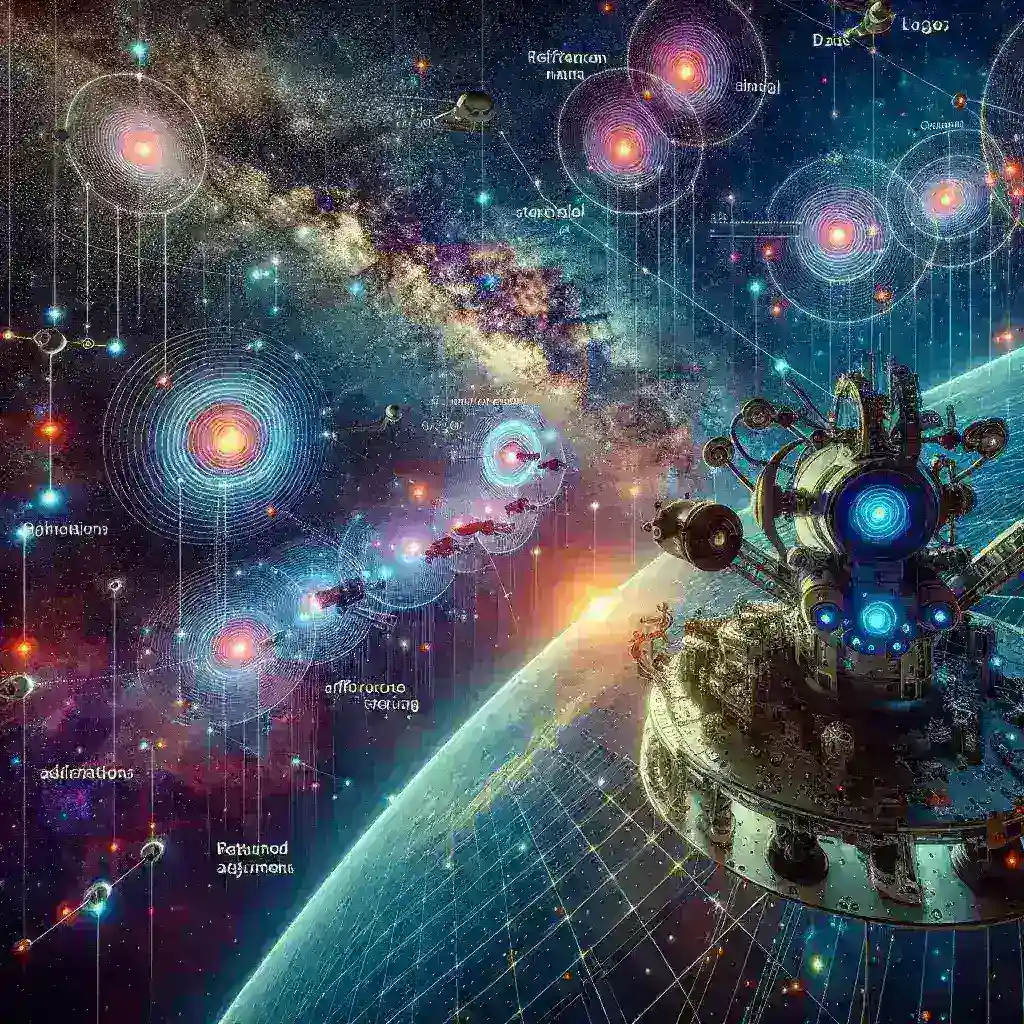Introduction
In the rapidly evolving field of astronomy, the advent of artificial intelligence (AI) has opened new frontiers that were once considered the realm of science fiction. One of the most exciting developments is the application of AI in space telescopes, particularly for the calibration of sensors. This article delves into how AI, specifically reinforcement learning, is transforming sensor calibration in space telescopes, making them more efficient and effective in capturing the wonders of the universe.
The Role of Sensor Calibration in Astronomy
Sensor calibration is a critical process in astronomy, ensuring that the data collected by telescopes is accurate and reliable. Telescopes are equipped with various sensors that detect and measure light from distant celestial objects. Any miscalibration can lead to significant errors in the data, impacting research and discoveries. Historically, calibrating these sensors has been a manual and time-consuming task, often requiring extensive human intervention and expertise.
The Challenges of Traditional Calibration Methods
- Time-Consuming: Traditional methods often require long hours of observation and measurement.
- Human Error: Manual calibration is prone to errors that can compromise the quality of the data.
- Resource Intensive: The need for human resources and equipment can be costly.
Enter AI: A Game Changer for Sensor Calibration
Artificial intelligence, and more specifically, reinforcement learning (RL), offers a streamlined approach to sensor calibration that addresses many of the shortcomings of traditional methods. Reinforcement learning is a subset of machine learning where an agent learns to make decisions by taking actions in an environment to maximize cumulative reward.
How Reinforcement Learning Works
In the context of sensor calibration, reinforcement learning algorithms are designed to optimize the performance of telescope sensors. The process generally involves the following steps:
- Environment Setup: The RL agent interacts with a simulated environment representing the telescope’s operational conditions.
- Action Selection: The agent chooses actions based on the current state of sensor calibration.
- Feedback Loop: The agent receives feedback in the form of rewards (e.g., improved data quality) or penalties (e.g., degraded performance).
- Policy Improvement: Over time, the agent refines its strategies to maximize rewards, leading to optimal sensor calibration.
Benefits of Using Reinforcement Learning in Space Telescopes
Integrating reinforcement learning into the calibration process of space telescopes brings several advantages:
1. Enhanced Precision
AI algorithms can analyze vast amounts of data more quickly and accurately than humans. This leads to finer adjustments in sensor calibration, resulting in higher quality observations.
2. Efficiency and Speed
Reinforcement learning automates the calibration process, significantly reducing the time required to achieve optimal sensor settings. This efficiency is crucial for missions where every second counts.
3. Adaptability to Changing Conditions
Space environments are dynamic. AI models can be trained to adapt to varying conditions automatically, ensuring that sensor calibration remains optimal despite fluctuations.
4. Reduction of Human Error
By automating sensor calibration, the reliance on human intervention is decreased, minimizing the chances of error that can arise from manual processes.
Case Studies: AI-Driven Calibration in Action
The Hubble Space Telescope
The Hubble Space Telescope has been at the forefront of astronomical discoveries for over three decades. While traditionally reliant on manual calibration, recent initiatives have explored incorporating AI techniques to improve the telescope’s operational efficiency. Early experiments with reinforcement learning have shown promising results in recalibrating sensors after servicing missions.
The James Webb Space Telescope
As the successor to Hubble, the James Webb Space Telescope is designed to observe the universe in unprecedented detail. AI technologies, including reinforcement learning, have been integrated into its calibration processes. These innovations allow the telescope to adjust its sensors in real-time, enhancing its ability to capture clear images of distant galaxies.
Future Predictions: The Evolution of AI in Astronomy
The use of AI and reinforcement learning in sensor calibration is just the beginning. As technology advances, we can expect:
- Increased Automation: More telescopes will rely on AI for automated calibration processes, leading to enhanced operational efficiency across various missions.
- Data-Driven Discoveries: With improved calibration, telescopes will be able to collect more accurate data, paving the way for groundbreaking discoveries in astrophysics.
- Collaborative AI Systems: Future telescopes may employ collaborative AI systems that share data and calibration techniques, further improving the accuracy and reliability of astronomical observations.
Conclusion
The integration of reinforcement learning into the calibration process of space telescopes marks a significant leap forward in astronomical technology. By enhancing precision, efficiency, and adaptability, AI-driven calibration systems promise to revolutionize how we explore the universe. As we stand on the brink of this new era in astronomy, the potential for discovery and understanding of the cosmos is limitless.

